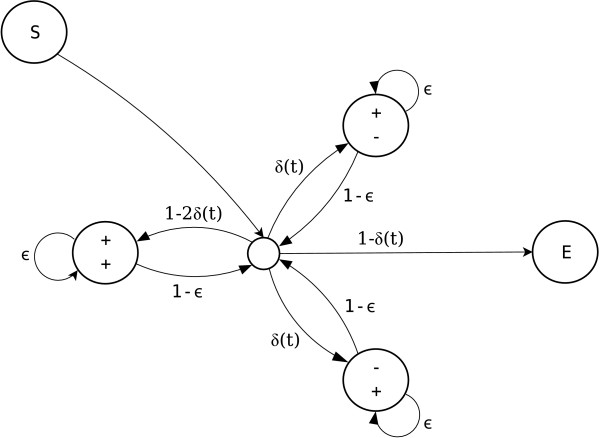Figure 1.

Pair-HMM representation of the fragment-based indel model. After the start state (S), the Markov chain transitions to the central silent state. From here it may terminate by transitioning to the end state (E), or it may enter a match (+/+), insert (-/+) or delete (+/-) fragment. Each fragment has probability δ(t) of being an insert or delete fragment. Fragment lengths are geometric with continuation probability ε. After the end of a fragment, the Markov chain returns to the central silent state where it may begin a new fragment. The silent state that indicates fragment boundaries can be removed, resulting in transitions only between non-silent states. The model is a fragment based model because the direct transition probability from (+/+) to (+/+) without going through the silent state is ε and not 0. The pair-HMM represents an improper distribution because the probabilities of outgoing edges of the central silent state do not sum to 1.
